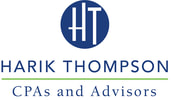|
If your payroll provider handles your payroll-processing responsibilities, you might not see the need to learn the ins and outs of calculating net pay. But imagine an employee seeking clarification on his or her take-home pay — do you know all the details? It's important to understand the intricacies of calculating net pay, regardless of whether you have a payroll provider. Below are four steps.
1. Calculate gross wages. This includes all types of wages paid to the employee during the pay period — such as base salary, regular hourly wages, overtime wages, commissions, tips, bonuses, paid time off and business expense reimbursements. 2. Subtract pretax deductions and nontaxable arrangements from gross wages to arrive at taxable wages. These are payroll deductions and arrangements that are excluded from tax withholding under Internal Revenue Service guidelines or state law. Since they are deducted prior to taking taxes, they lower the employee's taxable wages and increase his or her take-home pay. Pretax deductions include premiums for voluntary benefits offered under a cafeteria plan, such as Section 125 health insurance and flexible spending accounts. Nontaxable arrangements include business expense reimbursements or allowances made under an accountable plan. You'll need to know which specific taxes the voluntary benefits are excluded from, as not all benefits are exempt from the same tax. For example, cafeteria plan benefits are generally exempt from federal income tax, Medicare tax and Social Security tax withholding. However, traditional 401(k) contributions are exempt from federal income tax withholding but not Social Security tax and Medicare tax withholding. 3. Withhold taxes from taxable wages. This includes federal income tax, Social Security tax, Medicare tax and applicable state and local taxes. To determine federal income tax withholding, refer to IRS Publication 15 (Circular E). Withhold Social Security and Medicare taxes at the rates stated in Circular E. Be sure to withhold additional Medicare tax if the employee's annual wages exceed $200,000 for a single filer. (This additional Medicare tax applies only to the excess wages.) Contact your state and local revenue agencies for applicable state and local withholding rates. Often, this information is listed on the agency's website. 4. Subtract after-tax deductions to arrive at net pay. Also called post-tax deductions, after-tax deductions include wage garnishments (e.g., child support, tax levies and creditor garnishments) and voluntary benefits that do not qualify as pretax (e.g., Roth 401(k) contributions). They are taken out of the employee's pay after taxes have been withheld and, consequently, do not lower taxable wages or decrease take-home pay. In short, the steps to calculating net pay are as follows: Gross wages – pretax deductions and nontaxable arrangements – taxes – after-tax deductions = net/take-home pay. Comments are closed.
|
Newsletter articles are posted every 2 weeks. If you would like to have our e-newsletter delivered directly to your inbox, please sign up. Your information is confidential; you can unsubscribe at any time. Subscribe. Categories
All
|
Proudly powered by Weebly

 RSS Feed
RSS Feed